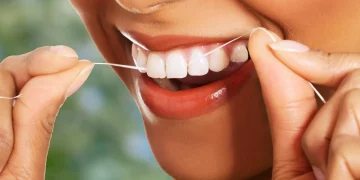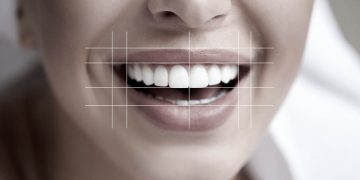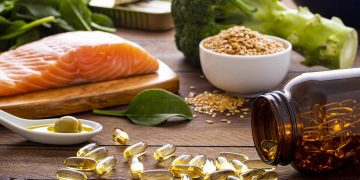Maintaining good oral health goes beyond regular brushing and flossing—it also involves being mindful of what you eat. Sugar and acidic foods are among the biggest culprits when it comes to tooth decay, enamel erosion, and gum disease. In this article, we’ll discuss the harmful effects of these foods on your teeth and gums, as well as offer practical tips on how to minimize their impact and protect your smile.
How Sugar Affects Your Teeth
Sugar is one of the leading causes of tooth decay. The process behind this involves harmful bacteria in your mouth that feed on sugars from food and drink. As these bacteria digest the sugar, they produce acids, which attack the protective enamel on your teeth. Over time, this acid can wear down enamel, leading to cavities and more severe dental problems.
What Happens When Sugar Gets Into Your Mouth?
- Bacteria feed on sugar: The bacteria in your mouth thrive on sugar, and when they consume it, they produce acids that demineralize your enamel.
- Enamel erosion: The acids from these bacteria weaken the outer layer of your teeth, making them more vulnerable to decay.
- Cavities form: If left untreated, this process results in cavities—small holes in your teeth that can grow larger over time and lead to infections or abscesses.
- Plaque build-up: When sugar is consumed frequently, plaque—a sticky film of bacteria—forms on your teeth. This plaque can harden into tartar, which only a dentist can remove.
Foods High in Sugar:
- Sweets and Candies: Hard candies, gummies, chocolates, and lollipops.
- Sugary Beverages: Sodas, energy drinks, fruit juices with added sugars, and sweetened iced teas.
- Baked Goods: Cakes, cookies, pastries, and other sugary snacks.
Why they’re harmful: These foods and drinks increase the acid levels in your mouth and promote plaque formation. The longer sugar stays in your mouth, the more damage it can cause.
The Harmful Effects of Acidic Foods and Drinks
Acidic foods can be just as damaging to your teeth as sugary ones. These foods contain natural or artificial acids that can erode the enamel of your teeth, leading to enamel wear and increasing the risk of tooth sensitivity.
What Happens When Acidic Foods Come in Contact with Your Teeth?
- Enamel erosion: Acids can dissolve the minerals that form enamel, gradually weakening the tooth’s outer layer.
- Increased tooth sensitivity: As enamel thins, the underlying dentin becomes exposed, causing pain or discomfort when consuming hot, cold, or acidic foods.
- Staining and discoloration: Acidic foods can make your teeth more susceptible to staining, as the enamel is weakened and more porous.
- Gum irritation: Acidic foods can also irritate the soft tissue in the mouth, leading to inflammation of the gums.
Foods and Drinks High in Acid:
- Citrus Fruits: Oranges, lemons, grapefruits, limes.
- Soda and Carbonated Drinks: Most sodas and sparkling waters contain phosphoric acid or citric acid, which contribute to enamel erosion.
- Vinegar-based Foods: Pickles, salad dressings, and other foods containing vinegar can increase acidity in your mouth.
- Tomato-Based Products: Ketchup, pasta sauce, and other tomato-based condiments have high acid content.
Why they’re harmful: These foods can demineralize your enamel, weaken your teeth, and increase the risk of tooth decay and sensitivity.

How to Minimize the Impact of Sugary and Acidic Foods
While it’s impossible to completely avoid sugar and acidic foods, you can take several steps to reduce their negative effects on your teeth and maintain your oral health.
1. Practice Proper Oral Hygiene After Eating Sugary or Acidic Foods
- Brush your teeth after meals: Make sure to brush at least twice a day with fluoride toothpaste, especially after consuming sugary or acidic foods. Fluoride helps to remineralize the enamel and reverse early signs of decay.
- Wait to brush after acidic foods: After consuming acidic foods or drinks, wait for at least 30 minutes before brushing your teeth. Brushing immediately after acidic exposure can cause further enamel erosion, as your enamel temporarily softens in an acidic environment.
- Use a soft-bristled toothbrush: Hard toothbrushes can further damage enamel, especially when used after acidic or sugary foods.
2. Drink Water or Rinse with Water After Eating Sugary or Acidic Foods
- Water helps neutralize acids: Drinking water after consuming sugary or acidic foods helps to dilute acids and flush away food particles.
- Rinse your mouth: If you don’t have access to water, rinse your mouth with plain water after eating sugary or acidic foods to minimize their impact.
3. Use a Straw for Acidic Beverages
- Limit acid contact with teeth: If you enjoy citrus juices, sodas, or other acidic drinks, try drinking them with a straw. This minimizes direct contact between the acid and your teeth, reducing the risk of enamel erosion.
4. Eat Acidic and Sugary Foods in Moderation
- Limit frequency: Rather than consuming acidic or sugary foods and drinks throughout the day, try to limit them to meal times. This helps reduce the overall time your teeth are exposed to harmful acids and sugars.
- Balance with tooth-friendly foods: When consuming sugary or acidic foods, try to pair them with foods that neutralize acids and promote saliva production. For example, pairing acidic fruits with cheese or nuts can help neutralize the acid and stimulate saliva flow, which helps protect your teeth.
5. Chew Sugar-Free Gum
- Stimulate saliva production: Chewing sugar-free gum after meals can help stimulate saliva production, which naturally helps neutralize acids and wash away food particles.
6. Regular Dental Visits
- Get professional cleanings: Visit your dentist regularly for checkups and cleanings to remove plaque buildup and catch any early signs of tooth decay or enamel erosion.
- Ask your dentist about fluoride treatments: Fluoride can help strengthen enamel and protect against cavities, especially for people who consume sugary or acidic foods more often.
Conclusion
Sugar and acidic foods can cause significant damage to your teeth, leading to cavities, enamel erosion, and increased sensitivity. While it’s difficult to eliminate these foods entirely from your diet, understanding their impact and following preventive measures can help minimize the damage. By maintaining good oral hygiene, drinking water after meals, eating in moderation, and visiting your dentist regularly, you can protect your teeth from the harmful effects of sugary and acidic foods and keep your smile healthy for years to come.













































Discussion about this post